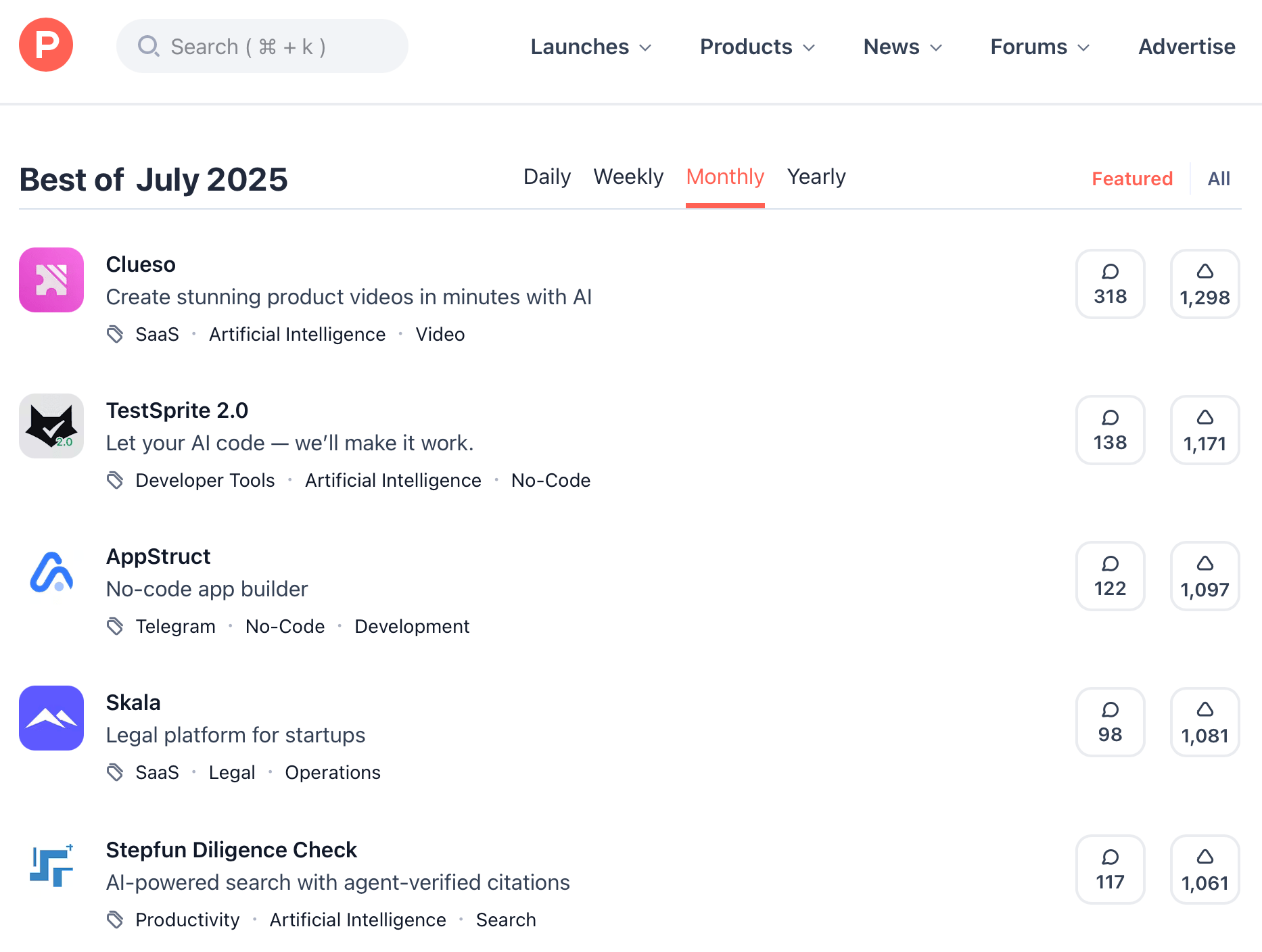Feedbask is a tool that lets you add a widget to your product to collect feedback from your customers.
When someone clicks the small button at the bottom of the site they can choose between different options like requesting a specific feature the product is missing, warning the team about a bug they’re experiencing, etc.
It’s a very useful tool but certainly not something the market doesn’t already offer which can be good and bad at the same time.
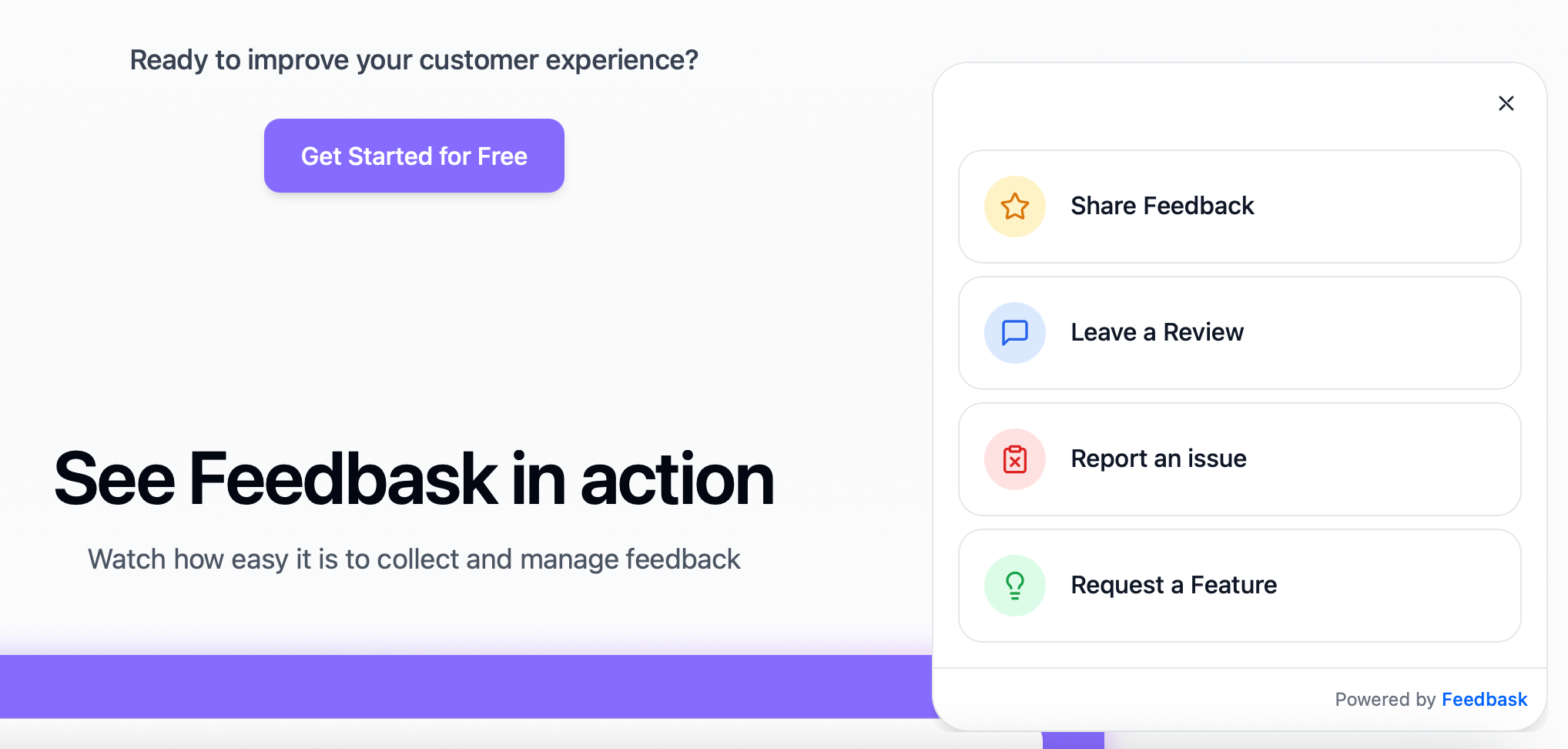
This is a type of product that has a lot of competition. On the other hand that also proves there’s a lot of demand.
It’s a match that plays on two tables: getting their product in front of potential customers and giving people a reason to choose them. Feedbask needs to nail both at the same time to stand a chance.
But I’m not sure they’re currently giving a convincing answer to the question a visitor has when they land on the site on why them and not something else.
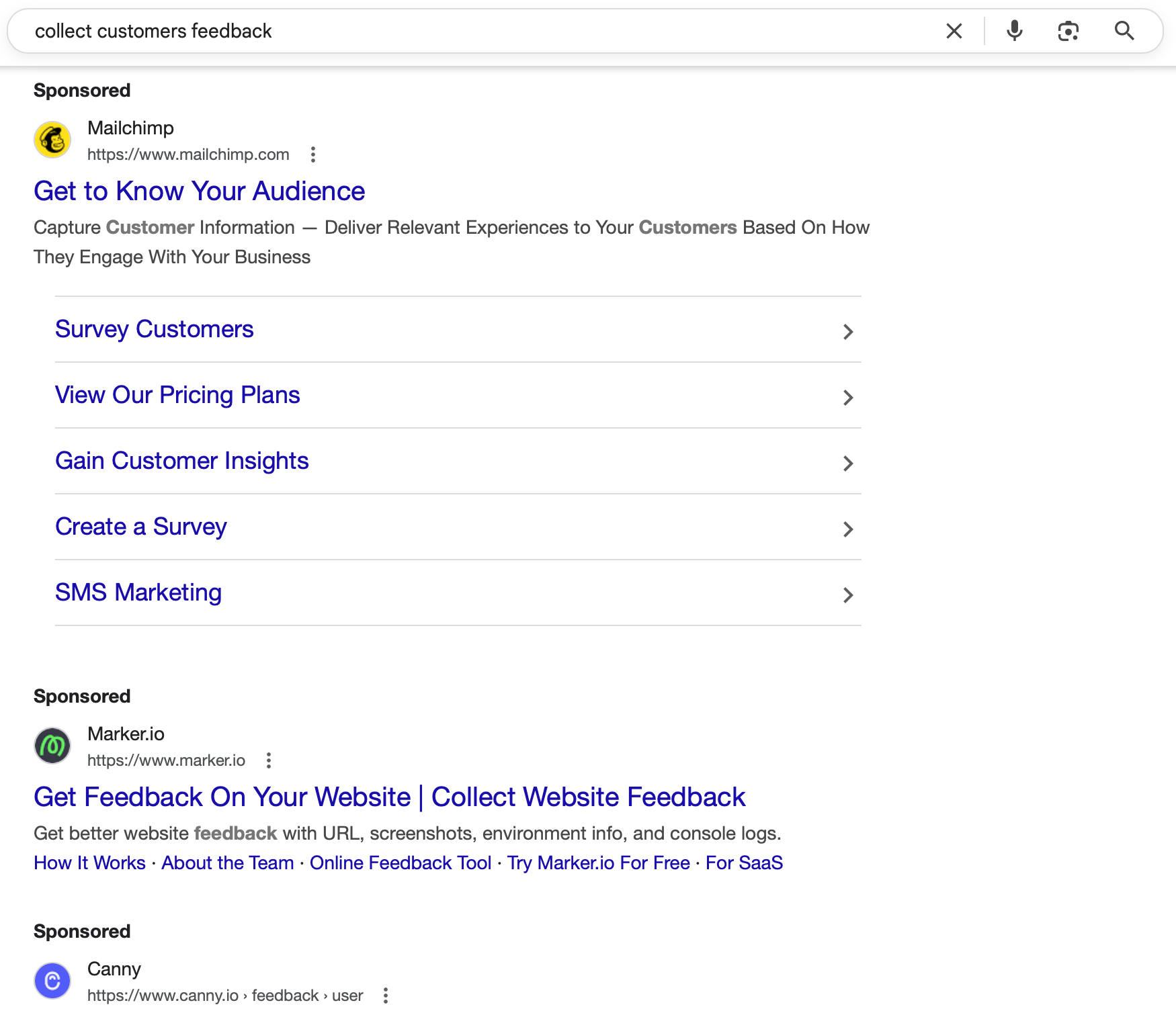
The fact that they’re an all in one product is their first competitive advantage. Instead of having to pay for multiple tools customers can save money by using only Feedbask. That needs to be front and center on their hero section.
I’d use the headline to tie the gist of their features to a problem + solution their potential customers care about.
For example, something like: “Collect customer feedback to improve your product and reduce churn.”
Then instead of simply listing the features I’d highlight the differentiator: “Replace 4 separate tools and save up to $200/month by collecting feature requests, capturing bug reports, running NPS surveys and gathering product reviews all through one simple widget.”
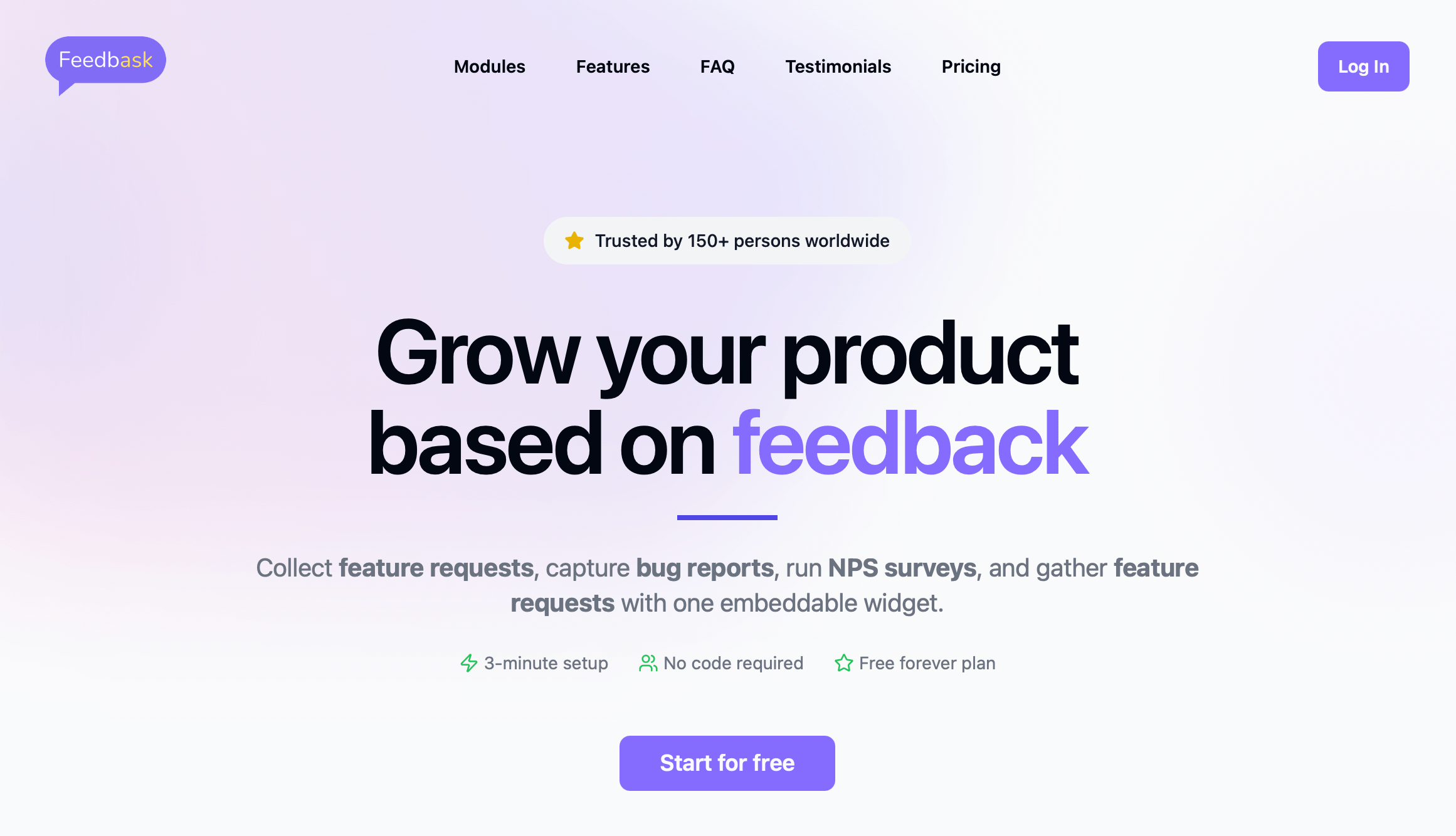
To support this promise pricing will be a crucial element of the offer.
Right now I feel like the curve is a bit too steep. If I go from 20 messages to 25 I suddenly jump from $0 to paying $600/year. That fear might definitely hold me back.
There’s definitely space for an intermediate plan that sits in the middle.
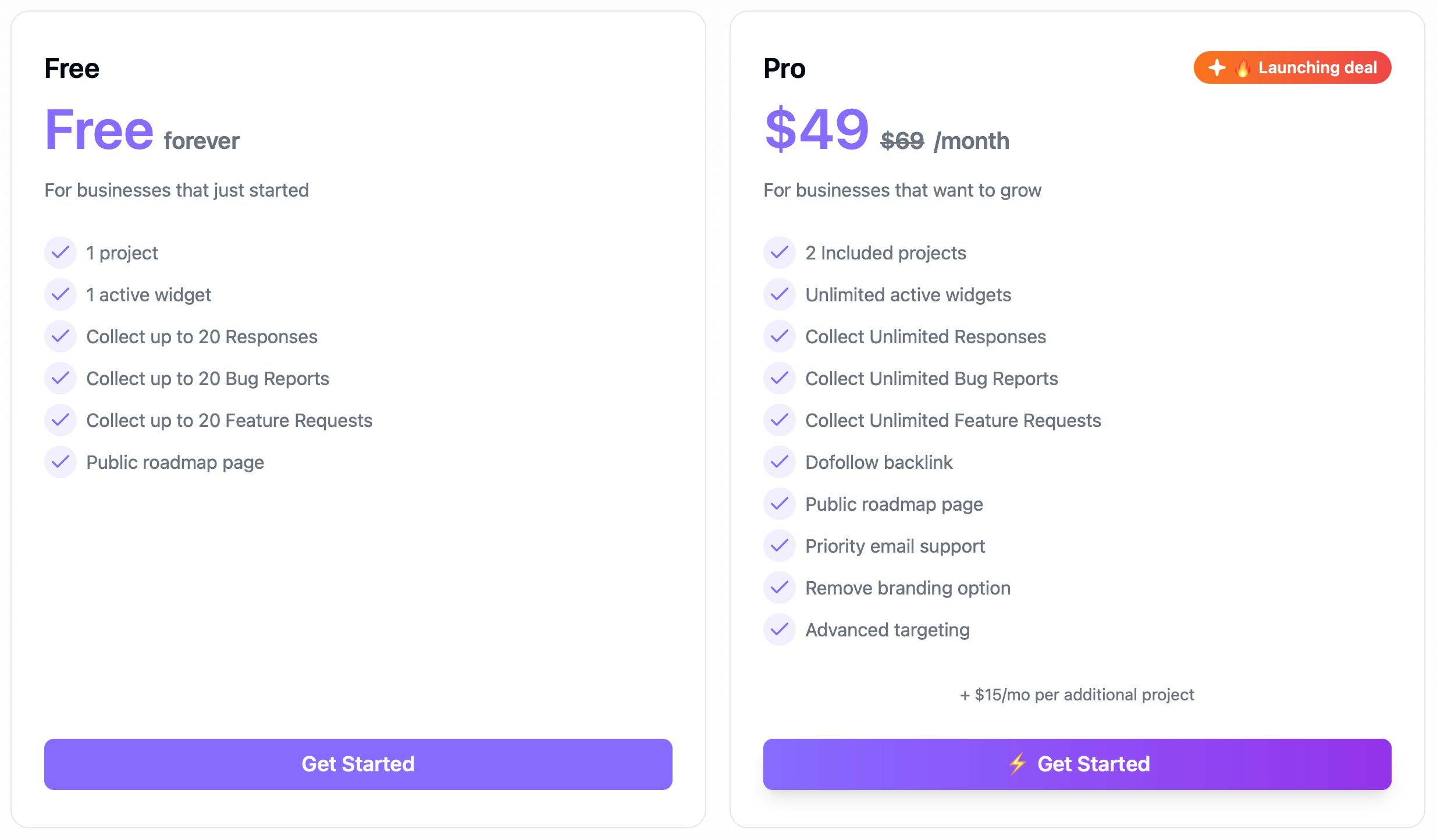
Feedbask also needs a narrative with a strong point of view for their content strategy across all different channels that ties the product to a problem their ideal customers are facing.
In this case I feel like the problem at the core might be: “You’re not talking to your customers enough.”
That’s common startup advice every founder has heard multiple times and deep down knows is true.
Depending on the content type Feedbask can be implicitly or explicitly mentioned as the solution to that problem.
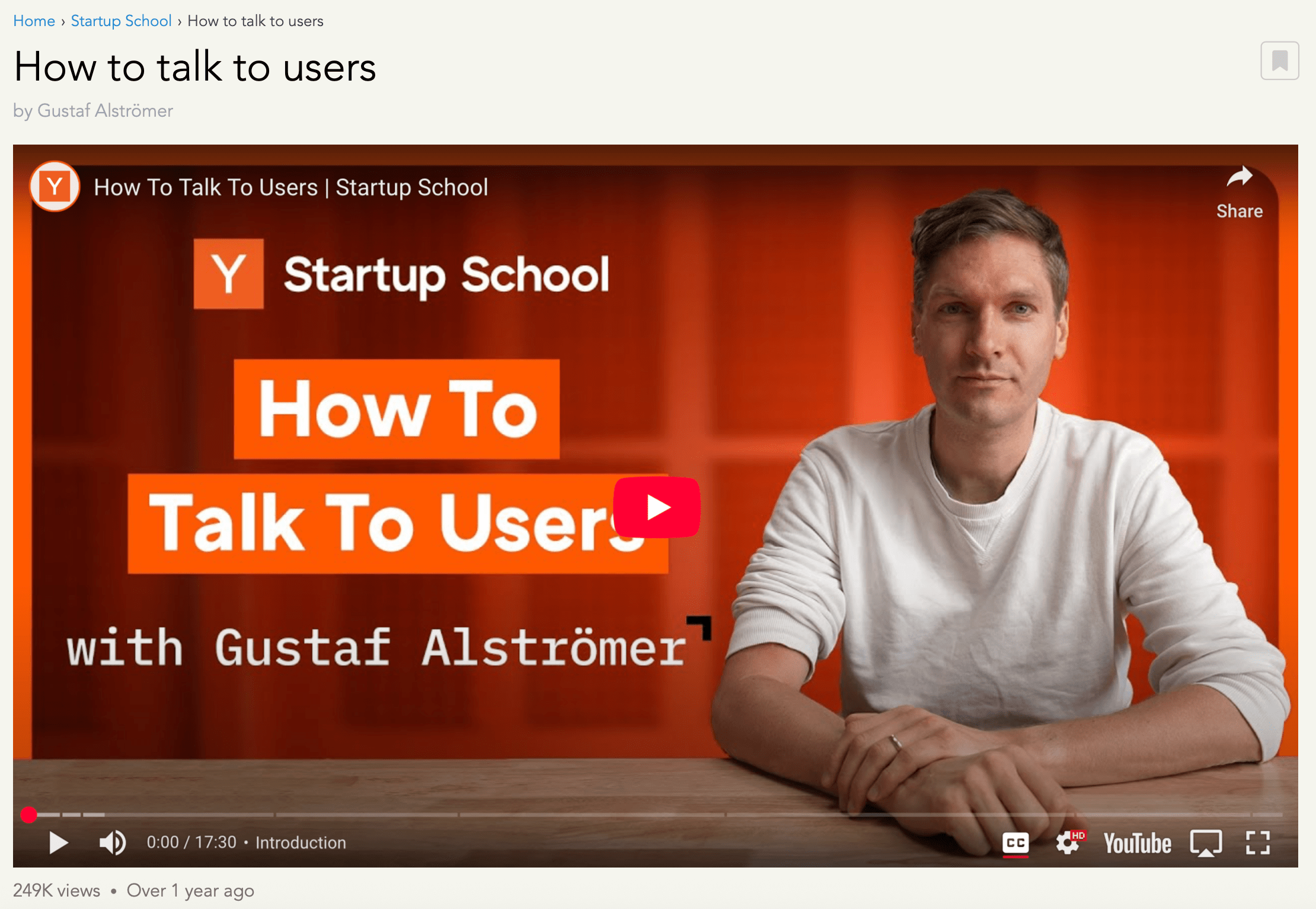
Let’s see what content like this might look like in practice using social media as an example:
1. Ask a thought-provoking question to spark engagement and discussion: “What’s the most surprising feedback a customer ever gave you?”
2. Share a quick lesson about why user feedback matters, with a practical takeaway: “Why you shouldn’t ship before you talk to at least 10 users.”
3. Offer a free resource in exchange for comments or shares: “Want our user interview template? Comment ‘feedback’ and we’ll send it.”
4. Tell a short story showing how feedback led to a better product decision: “One user call saved us 3 weeks of building the wrong thing.”
5. Challenge a common belief with a feedback-driven insight: “Customers do know what they want if you listen the right way.”
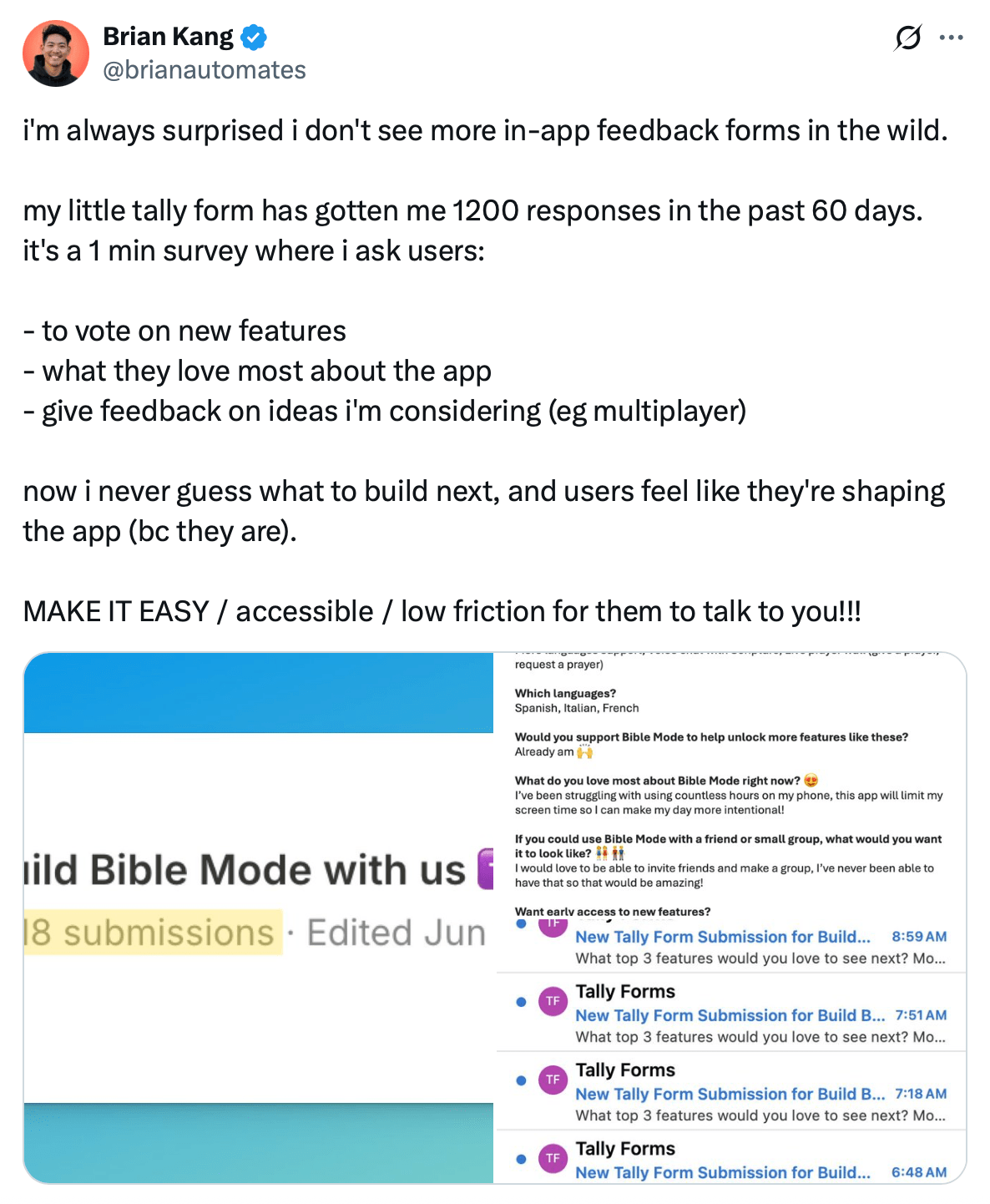
There are many people actively searching for a tool like Feedbask and one of the advantages of being an all in one tool is that you can intercept them through a wide range of keywords.
That’s why I was really surprised to see that they have a one page site. They’re trying to rank the homepage for a lot of different keywords at the same time as you can see by their page title: “All in one feedback collection platform – reviews, survey, bug reports.”
I’m not a fan of this strategy. I think it would be much better to have dedicated landing pages to match the search intent of each specific keyword. For example they should create one exclusively about their bug reports feature.
People visiting a page like that will be much more likely to stay and not bounce back which not only helps conversion but will also signal to Google to rank it higher for future searches.
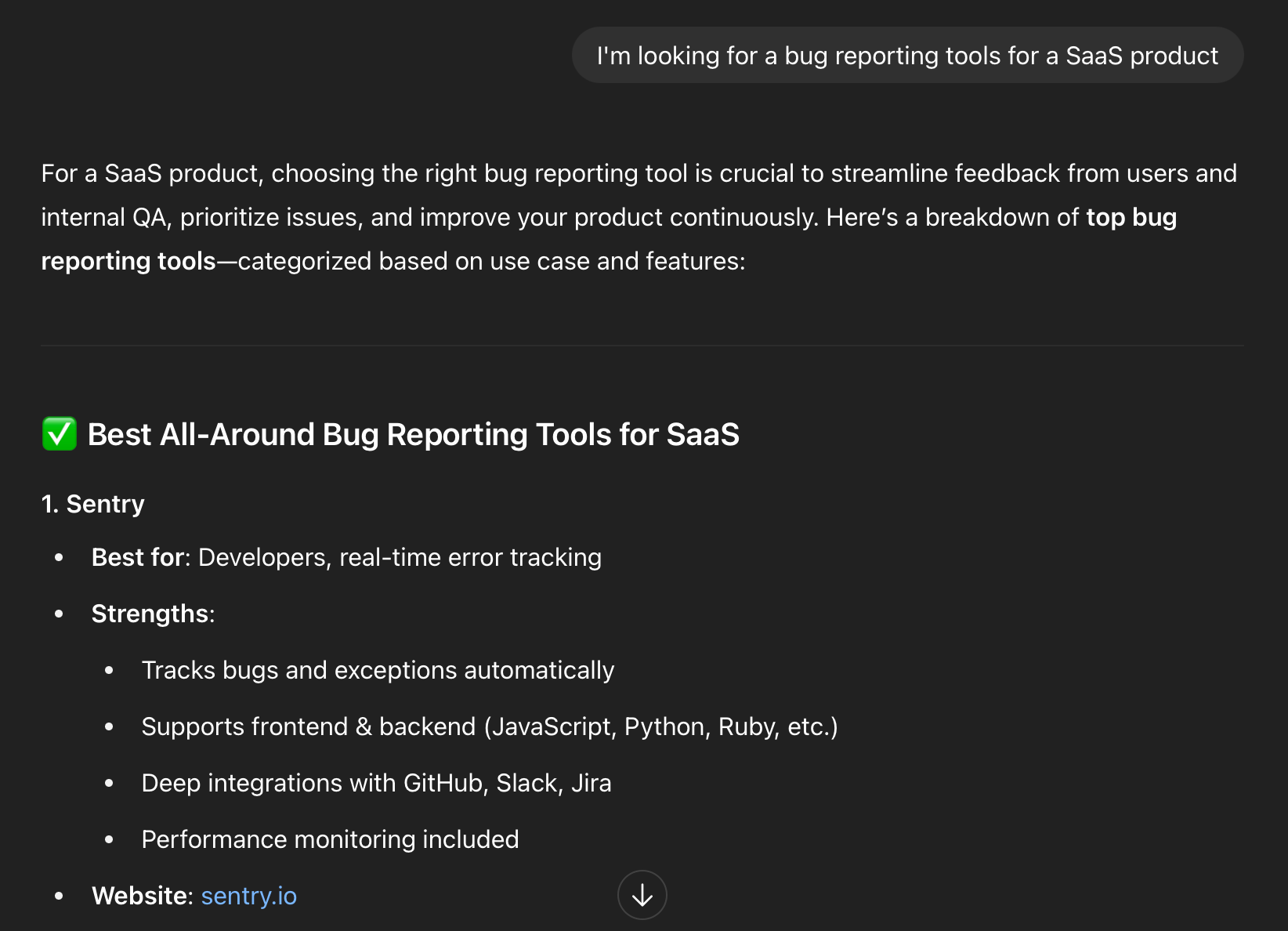
I found it really strange that they had a one page site so I decided to double check by using the site:feedbask.com command to see what pages Google has indexed.
To my surprise there were many. It looks like they used a programmatic approach to create multiple landing pages targeting specific long-tail keywords.
But the fact that I couldn’t click on them from their main site makes them orphan pages. This complete lack of internal links will make it really hard for them to rank.
What they should do right now is add the category pages to the footer so that the ranking power from all the links the site will earn over time can flow across the entire structure.
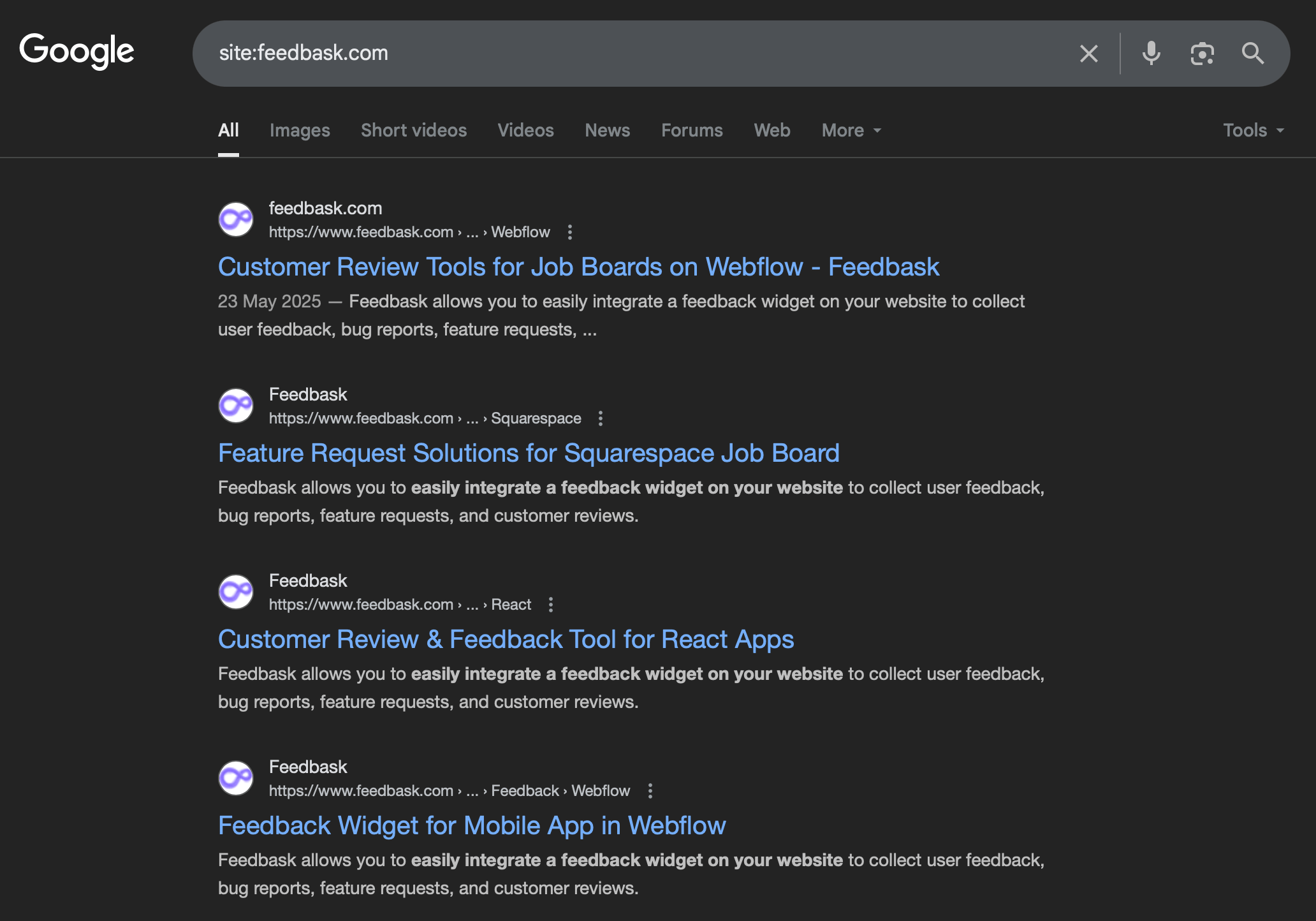
Feedbask has a structural growth advantage because when someone installs the widget on their site every visitor is exposed to their branding if they’re on the free plan (and I assume that’s exactly why Feedbask intelligently created one).
For this to work well they need a wide user base. The bigger the denominator the higher the growth.
So their number one goal as they’re just starting out should be to have the widget installed on as many sites as possible.
But not just any sites. The ones they know their ideal customers already use.
What I’d do is gift a special package (unlimited plan but without the ability to remove the powered by link) for free to founders who sell products to the same target audience as Feedbask.

To do this I’d follow a 3-step process:
- Research: find other products in the same early stage as Feedbask that might be a good fit
- Outreach: send the founder a short and friendly message explaining what they’re offering
- Monitor: track who drives the most conversions and double down on similar products
